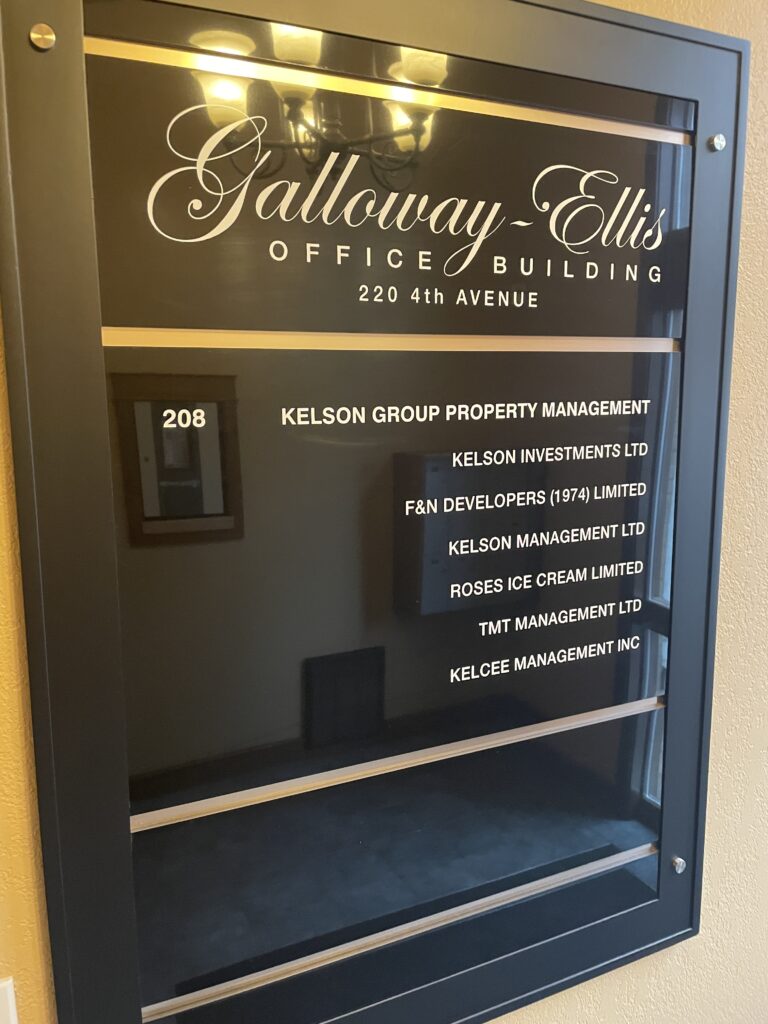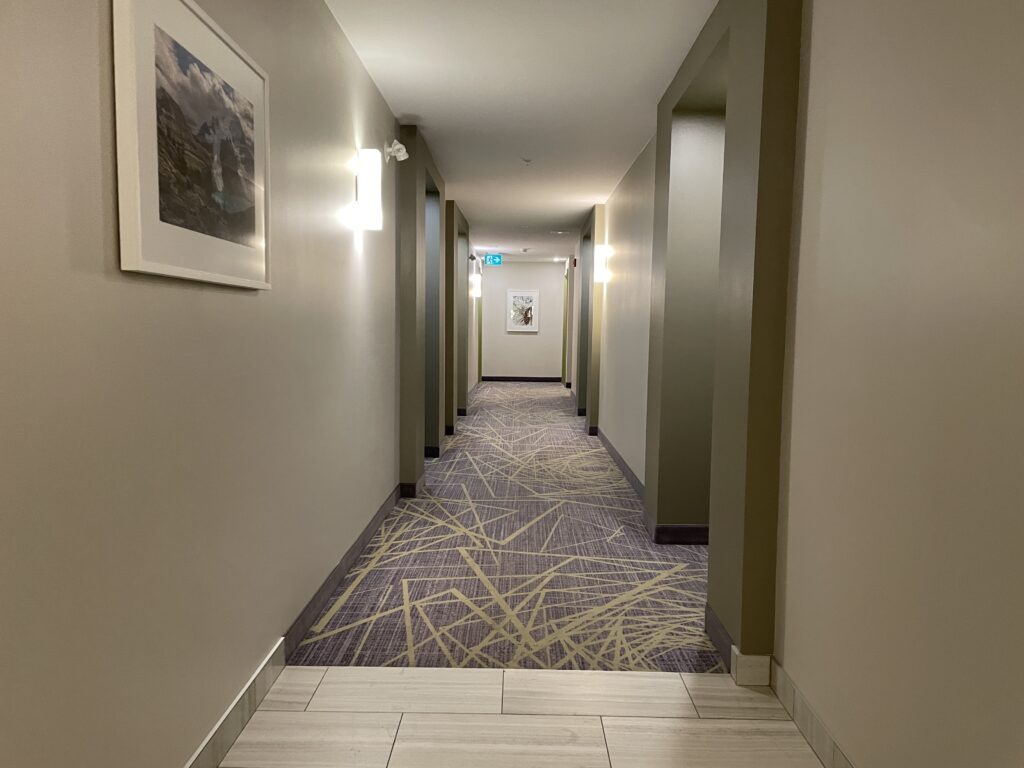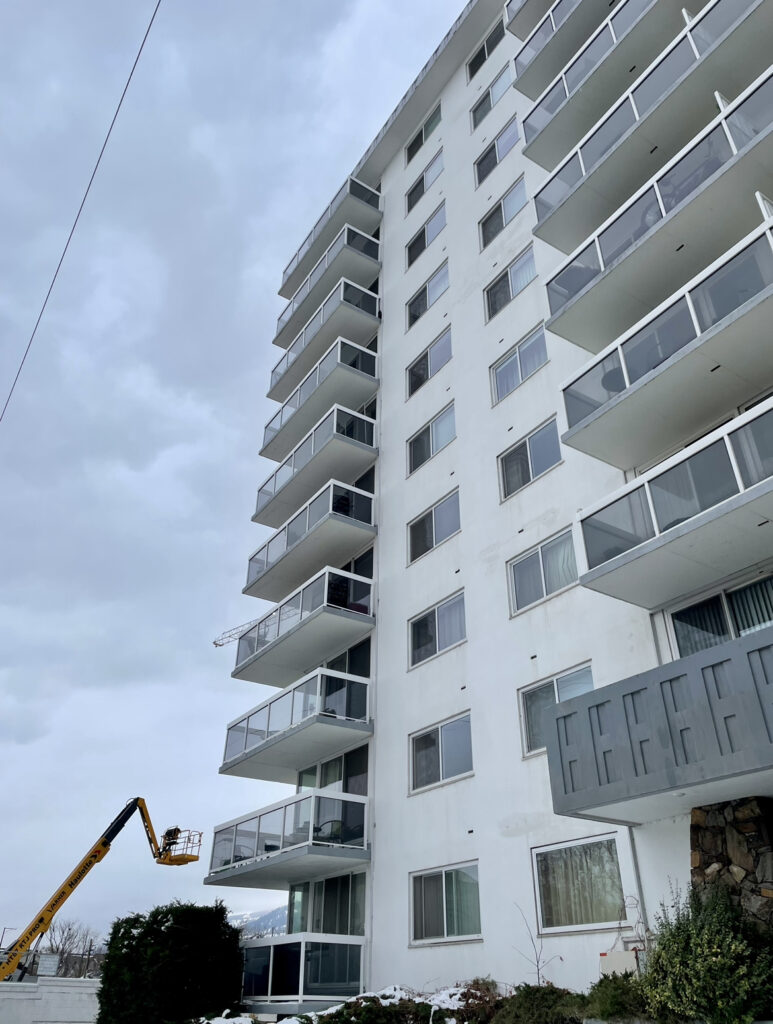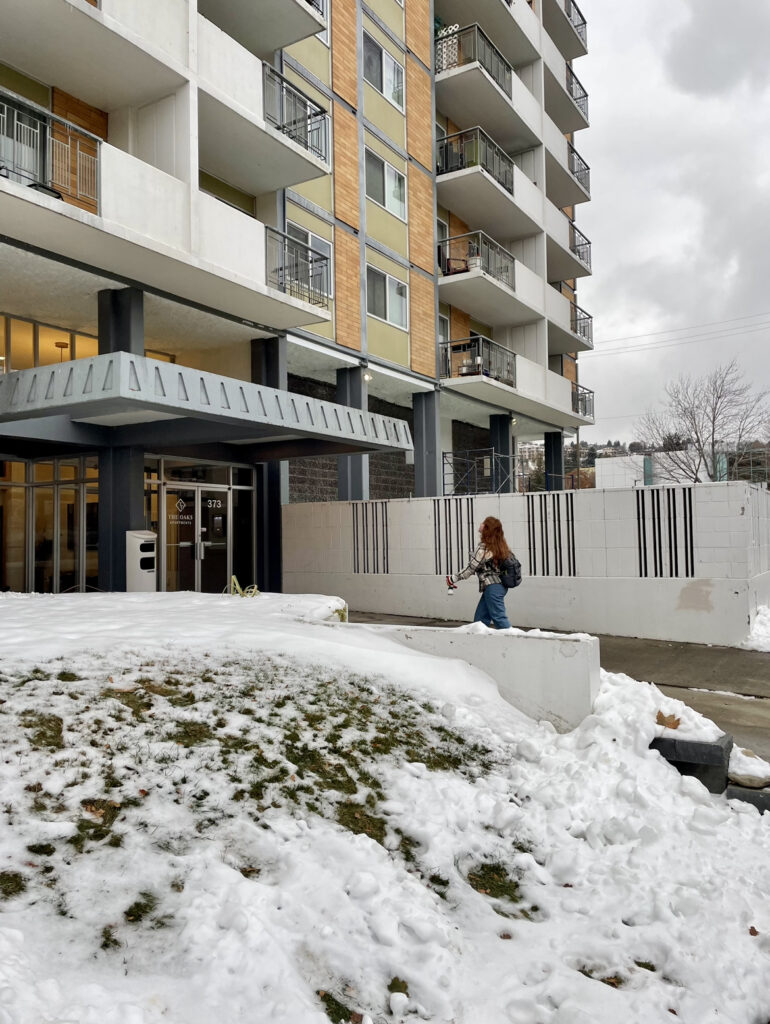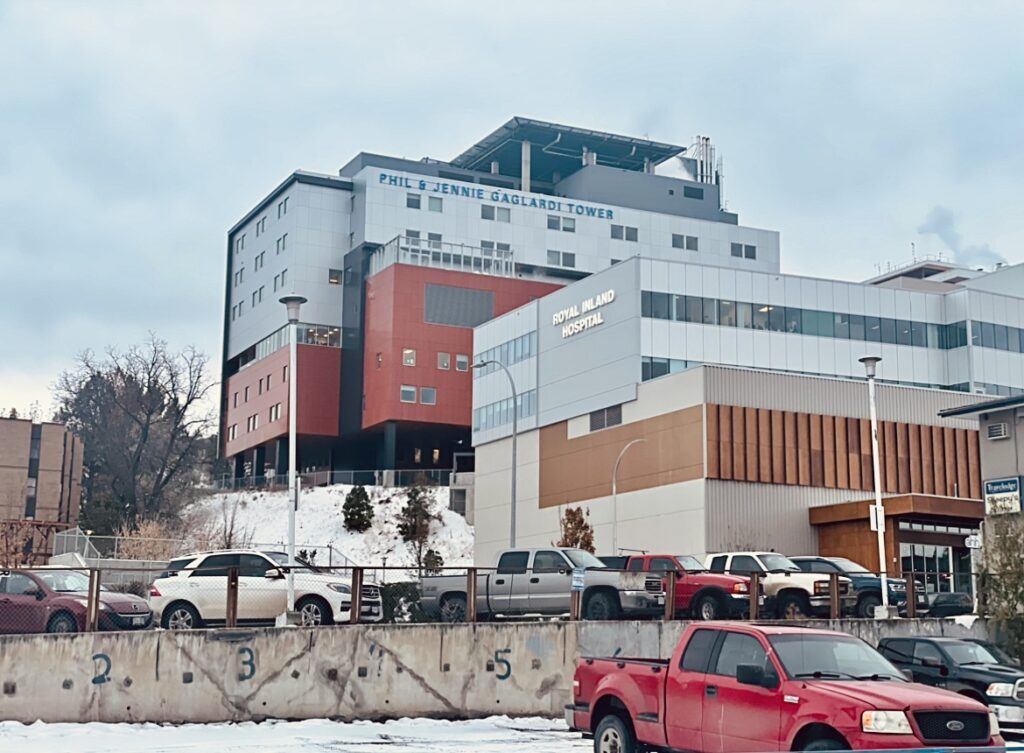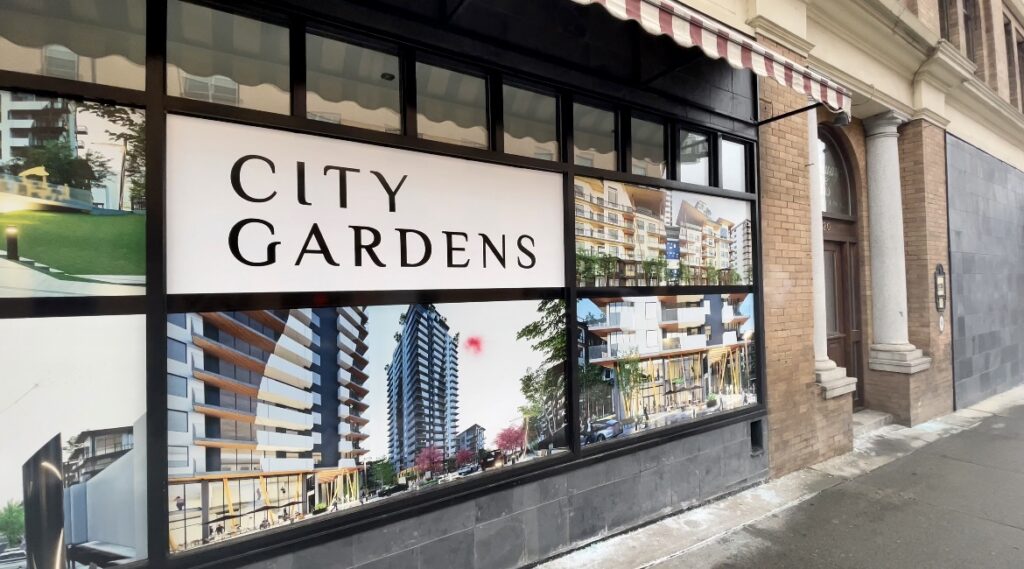Housing Healthcare Workers
Category: Market Rental | Author(s): Janelle Rudolph & Paige Kidder
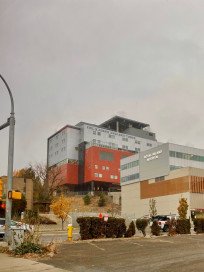
Image Credit: Janelle Rudolph
Location Address: Royal Inland Hospital, Columbia Street, Kamloops, BC, Canada
Subject
In Kamloops, affordable market rental housing is hard to find, especially around the downtown core near the Royal Inland Hospital. This has created a crisis for young professionals and recent graduates coming to the city, exemplified most concerningly with healthcare professions.
Kamloops is a growing city within the Thompson Okanagan Region, a region that according to the B.C. Labour Market outlook for the next 10 years, is projected to have the third largest number of job openings in the province. The B.C. Labour Market outlook also shows that the healthcare industry is expected to have the highest number of job openings in this time frame. Additionally, according to the Kamloops Housing Needs Assessment, Kamloops’ population has been increasing steadily with an average annual growth rate of 1.2 per cent, per year from 2006 to 2016. As the city grows, it needs young families and professionals to meet hiring demands and start their careers in Kamloops to support the economy and its people.
Crisis
Within the city of Kamloops, market rental housing is hard to find, and the prices are constantly increasing. According to Zumper, a rental listing site, as of 12 November 2022, the average monthly rent for a 2-bedroom apartment in Kamloops is $2,010, which is a 12 per cent increase from last year. It’s especially difficult in the areas of the city most sought after by young professionals looking to establish themselves such as the downtown core, Sahali, and Aberdeen. This lack of availability and high unaffordability is pushing new young people away, thus stunting the growth of the city as well as contributing to the short supply of healthcare workers and reducing access to healthcare for the community.
“The idea that housing is affecting the recruitment potential for healthcare is a significant problem,” said Jim Anderson, Executive Director of Venture Kamloops. “It’s to the point now where it’s becoming a roadblock.”
Anderson explained that recent census data shows Kamloops as the fifth fastest-growing city in all of Canada, which continues to put more pressure on the city’s housing supply. Not only can people not find housing in an ideal location such as close to their place of work and necessary amenities, but they can’t find housing at all.
“Typically, we have a couple hundred people that will sign up to our waitlist every month for our group of buildings,” said Jason Fawcett, President of Kelson Investment Group. “And we’ve got around 25 properties in Kamloops, spread out throughout all areas of the city… Anywhere around 150 to 200 people every month that are signing up that are brand new. I know a lot of them end up finding other housing. They just can’t wait.”
According to Fawcett, the local availability rate, which measures the amount of turnover and vacancy in a building, has decreased by approximately 30 per cent since the end of the COVID-19 pandemic. This is in part because current tenants have rent control protection on their rent rates, securing their pricing at the market value of a few years ago.
“Landlords are in a bit of a conundrum right now,” Fawcett said, “Where they feel they have to charge a higher rent to make up for the low rents that are being offered or given to some of the long-term residents.”
This conundrum is furthered by rental prices being driven up by the increase in building, renovation, and maintenance costs, as well as the rising interest rates and inflation.
With a focus on downtown Kamloops, the perpetuating issues create further problems when looking to attract prospective healthcare professionals. The proximity of the hospital to downtown makes the area ideal for healthcare professionals new to the city, here only temporarily, or looking to relocate somewhere closer to work.
“[When recommending accommodations] I always put downtown first,” said Heidi Coleman, CEO of Royal Inland Hospital Foundation. “Because a lot of the nurses want to walk to work and some of them don’t come with cars…if they can’t get walking distance, the hospital might be able to give a stipend for two taxi’s a day, or maybe they take the bus in the morning and then a taxi back at night.”
Coleman has become the go-to person to locate accommodations for doctors, travel nurses, and other healthcare professionals coming to Kamloops as it is difficult to locate rentals on their own and in a timely manner. In the foundation’s management, there are two condos and a house located near the hospital and those staying in them only need to pay for their groceries and amenities.
Coleman further explained that she went on CBC Radio to inform citizens that the Foundation was looking for additional, temporary housing for incoming professionals. Now owners will call Coleman to offer their spaces specifically to healthcare workers if they are going away for long periods, such as seniors going south for the winter. This has helped provide some short-term arrangements.
“I guess we’re taking stuff out of the pool of rentals,” she said. “But [owners] really want their spaces to go to health professionals.”
Video Credit: Paige Kidder and Janelle Rudolph
Community Implications
The healthcare shortage is something Kamloops is already struggling with, and the lack of market rental housing for young healthcare professionals is only adding to the stress. This means longer wait times and inevitably lower quality of care for patients as the Royal Inland Hospital, as well as other healthcare facilities in the city, struggle to meet the healthcare demands of the community and surrounding areas that rely on the services.
Jason Fawcett mentioned how the availability and affordability of market rental housing has become problematic for the community because people are forced to find housing elsewhere.
Jim Anderson identified that for young healthcare professionals, this housing often may be in a different community, moving healthcare professionals away from Kamloops altogether.
“A young professional who is maybe starting out in their career, not sure if they’re going to settle in Kamloops for a long time, [considers] ‘well I’ll rent something’… but there’s nothing available. So, it’s an incredibly harsh roadblock in the recruitment process and the professional growth of young people, or young professionals, in the healthcare industry. Or any other industry for that matter.”
This is essentially denying new workers the opportunity to live in Kamloops and support the healthcare system, thus contributing to the staffing shortage at the hospital and creating even more strain on residents to find and receive sufficient healthcare.
Heidi Coleman described how travel nurses and physicians also struggle to find places to stay temporarily within the city. This is problematic for the community as Kamloops relies on these professionals to help fill healthcare staffing shortages and gaps.
“Back in April, we were trying to get some travel nurses to come and help us. The [travel nurse] agencies had called a lot of the hotels and they could not find any rooms for them,” Coleman commented.
Coleman also mentioned that sometimes doctors will come on temporary placement to work and live in the city and may then decide if they want to permanently work in Kamloops. But when they come back, they must find their own place to stay, and often they can’t. This is a persistent challenge that draws healthcare workers away from permanently staying in Kamloops.
It is additionally important to keep in mind that there is a continuous pattern across Canada where there’s a larger population of older citizens in the 65+ range than there is of younger citizens. Aging populations have more demand for healthcare, but with the lack of housing availability and affordability in the city, there’s less care available for them.
Click or press on images to expand.
A Way Forward
We recognize that no one suggestion will solve the housing crisis in Kamloops, but based on our research, here are some ideas that may help move us even slightly forward.
The common conclusion amongst our interviewees was a need for greater government involvement. As such, the largest suggestion is higher levels of cooperation between companies, developers, and all levels of government.
“The response has to come from the organizations that can make the difference,” Jim Anderson said. “So, municipalities have to facilitate the construction of housing through streamlining red tape, making permits available in a timely fashion, making sure that land that needs to be either rezoned or redeveloped or whatever it is, made available to developers and housing construction.”
Jason Fawcett explained that Kamloops is efficient and fairly easy to plan and develop with, saying that the City Gardens development was approved relatively promptly. Overall, Kamloops has a shorter application to approval wait time and looser restrictions compared to other municipalities within the province. This action needs to be maintained.
A big part of this possible solution would be better communication and collaboration between the city and its industries. For example, in the situation of the hospital, there’s a growing demand for health professionals but few places near the hospital are available for rent and purchase, meaning less incentive to seek a healthcare job in Kamloops. Having communication and plans in place between the city and the hospital to address this issue could have some positive and productive outcomes.
The other commonality was the support and push for densification, particularly in the downtown core of the city, due to geotechnical and economic issues that come with building up the hillsides. In the case of City Gardens, the new high-rise towers, and multi-story complexes, the clear goal is densification and the hope to set an example for future developments in Kamloops.

